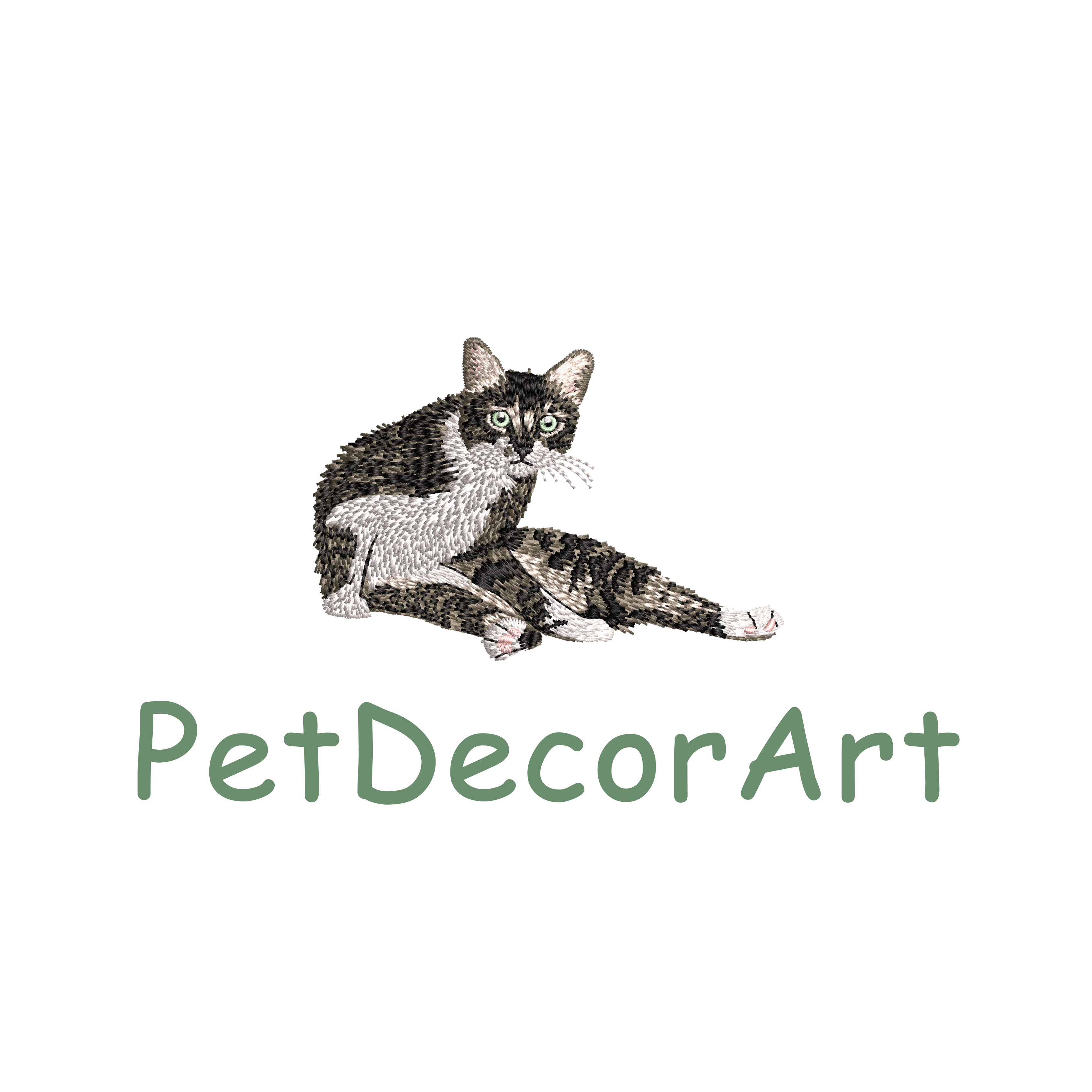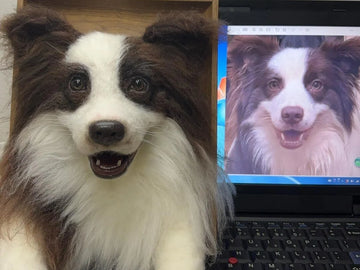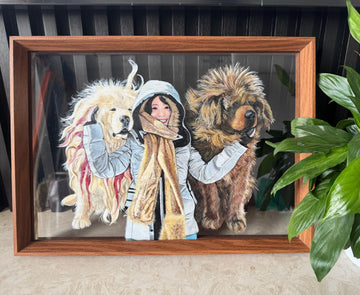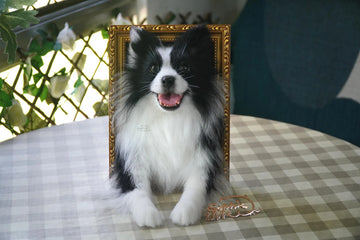When a beloved animal dies, the house stays the same but the air is different. In that quiet, many families reach for something tangible—an object that carries weight, texture, and story. This long-form guide explains why keepsakes help, how to choose or craft them with care, and the small, sustainable rituals that turn an object into a source of real comfort.
1) Why Tangible Keepsakes Help: From Absence to Presence
Grief is not an event; it’s a relationship that’s changing shape. Psychologists often talk about continuing bonds—the idea that we don’t “move on” so much as we move forward with the love still intact. Tangible keepsakes help because they create a physical anchor for a bond that wants a place to land. When your hands have somewhere to go, your mind has somewhere to rest.
Touch, in particular, is a powerful regulator. A soft surface to stroke, a familiar weight to hold, or a small, carefully crafted likeness engages the body’s haptic memory. That tactile feedback quiets spirals of “what-ifs” and brings attention back to breath. In this sense, a good keepsake is a grief-safe companion object: not a cure, not a distraction, but a steadying presence that you can return to on hard days.
2) What Counts as a “Grief-Safe” Pet Keepsake?
A grief-safe keepsake balances likeness with livability. It should feel present but not intrusive; beautiful but not fragile to the point of fear; personal without overwhelming private memories. Below are common forms and what they offer.
Textile & Fiber-Based
- Wool, felt, and needle-felt sculpture: warm to the touch, softly detailed, durable when displayed properly.
- Memory quilts or blankets: integrate bandanas, favorite fabrics, or embroidered names for gentle daily use.
Good for people who self-soothe through touch and routine—stroking, folding, dusting.
Hard Media & Framed Art
- Wooden frames & shadow boxes: hold photos, tags, a letter; easy to dust; protect contents.
- Glass- or acrylic-front portraits: colorfast when UV-safe; ideal for long-term display.
Good for households that prefer visual focus and minimal maintenance.
Portable Mementos
Key charms, small brooches, or locket-sized portraits allow private remembrance in public. Portability supports micro-rituals—a thumb rub before meetings, a glance during a commute, a whisper in a line at the pharmacy.

3) Who Benefits and How: Adults, Children, Elders
Adults
Adults often need an object that supports private grief in public schedules. A subtle likeness on a shelf near the door, a brooch on a scarf, or a small framed work by the bedside lets you check in with the memory before high-demand moments and again when you return.
Children
Kids process in cycles—intense sadness, then sudden play. Durable, huggable keepsakes allow safe “approach and retreat.” A child can bring the likeness to the couch, then back to the memory shelf. Rituals—like saying goodnight, or telling the keepsake one good thing from school—make continuity visible.
Elders
For older adults, objects that are easy to see, hold, and clean matter most. Heavier bases for stability, high-contrast framing, and care-and-keep cards printed in larger type help the memorial fit smoothly into daily living.
4) Designing the Right Keepsake: Materials, Meaning, Care
Material Choices
- Wool & felt: ethically sourced wool with dense felting resists fuzz; soft edges carry warmth.
- Wood: oak, walnut, or maple frames add natural calm; choose low-VOC finishes.
- Glass/Acrylic: UV-stable glazing preserves color; acrylic is lighter for child-safe spaces.
Meaning Layers
- Pose & expression: pick a posture that feels like “them”—alert tilt, sleepy paws, signature squint.
- Context: add a small tag, a ribbon from a favorite park, or a scrap of blanket in a shadow box.
- Words: a single word (“stay,” “home,” “brave”) can hold more than dates alone.
Care Considerations
- Keep textiles out of direct sunlight; dust with a soft brush; avoid high humidity.
- Use archival sleeves for photos; avoid harsh cleaners near wood and wool.
- Place out of reach of curious surviving pets; make it a “no-fetch zone.”

5) Stories from Families: Three Healing Vignettes
A parent and child
After a small terrier named Bean died, Laura and her eight-year-old son, Milo, made a simple memory shelf: a photo, a felt likeness, a tiny bowl with “goodnight” treats. Every evening, Milo chooses a story to tell Bean—one sentence only. The rule keeps it doable, and the ritual keeps the bond current. On hard mornings, Milo strokes the felt ear and repeats their secret phrase: “See you in the stories.”
An elder living alone
Mr. Yao missed the “footstep rhythm” of his cat moving through the apartment. He commissioned a framed likeness with high-contrast whites around the eyes and placed it on the hallway console. Passing by, he taps the frame lightly—a haptic hello that steadies the day. The action is quick, respectful, and repeatable—precisely what long-term grief needs.
A multi-pet household
After losing an older dog, two younger dogs kept searching. The family added a low shelf the dogs can sniff, with a plush likeness for the humans above. The shelf signals “we remember” without confusing the dogs with a toy they’re allowed to grab. Scent-safe memorials under supervision helped the younger pair calm down over two weeks.
6) Rituals that Work: Micro-Moments, Not Monuments
The most sustainable rituals are small enough to repeat. Choose one or two of the following and let them stand for the rest.
- Morning touchstone: as you leave, rest your palm on the frame or sculpture for one breath.
- Friday flower: a single stem in a bud vase near the keepsake. No grand bouquets required.
- Seasonal swap: change a ribbon or base cloth four times a year; say one memory aloud.
- Anniversary letter: write a short note and tuck it behind the frame; read last year’s note before writing the new one.
- Travel token: carry a small photo or charm; snap a picture of it in new places—“we still go together.”
7) Memory Shelves & Gentle Altars: Style, Safety, Longevity
A memory shelf is not a shrine; it’s a vignette where love can land. Start with a stable surface, soft light, and a simple composition: image, object, word. Avoid direct sun and kitchen grease; grief deserves clean air and quiet corners. For households with kids or active animals, use acrylic fronts, weighted bases, and museum putty beneath frames.
Styling Tips
- One focal point (the likeness), two supporting items (tag, letter), one texture (cloth/plant).
- Warm lamp from the side, not overhead; dimmers make evening rituals gentle.
- Label a small envelope “found later”: whiskers, small notes, a ribbon—objects that appear as the year turns.
8) Choosing an Artisan or Product: A Practical Checklist
Before You Order
- Portfolio clarity: look for eyes that feel alive, not generic; expressions that match species quirks.
- Process transparency: sketches or proofs? revision windows? final approval step?
- Materials & care: wool density, frame woods, UV glazing, cleaning instructions.
- Timeline reality: handwork takes time; choose makers who disclose honest ranges.
During & After
- Privacy: confirm how photos are stored and for how long.
- Packaging: ask for a compassionate unboxing note—quiet colors, low crinkle, no perfume.
- Care card: request printed care instructions to reduce anxiety post-delivery.
- Repair policy: life happens; see if minor fixes are possible later.
9) Where to Start: Low-Pressure Options & First Steps
If you’re unsure what kind of object you want, begin with something gentle and reversible. Browse a curated family-friendly series of Stuffed Animals to understand scale, texture, and placement in your home. A quiet, lifelike presence on a shelf can be “enough” for months while you decide if a framed portrait or more elaborate piece feels right later.
For those who long for a full-body likeness—because posture and silhouette feel essential—consider commissioning a lifelike, handcrafted replica built from your favorite photos. One option that readers have found grounding is moz art pet pals make your own felt cat and dog, a bespoke approach focused on anatomy, coat transitions, and the micro-expressions that make “your one” unmistakable. This is not a toy; it’s a visual companion designed for display and reverent touch.
First-Step Exercise (15 minutes)
- Gather three photos: one “signature face,” one full-body posture, one candid moment.
- Write three adjectives that define their presence (e.g., “brave, watchful, silly”).
- Choose one word to place near the object (“home,” “stay,” “together”).
- Clear a small shelf and create a temporary vignette; live with it for a week.

10) FAQ (Collapsible)
Will a keepsake make it harder to “move on”?
Healthy grief isn’t about erasing attachment—it’s about finding a steady way to carry it. Keepsakes support the continuing bonds most families report naturally. If an object increases panic, step back and try a simpler vignette or move the piece to a calmer room.
Is it okay if my child handles the piece?
Yes—with rules. Choose durable designs for kids and set “gentle hands, short visits” guidelines. Offer a soft cloth for dusting so the ritual feels productive and safe.
How do I involve other pets?
Offer supervised sniffs of a memory shelf placed at their nose height. Keep delicate objects out of reach. Dogs often settle after a few days when the space smells like home and feels claimed but calm.
We disagree in the family about style. Now what?
Create layered spaces. A small shared vignette in a public area and a more personal object in each person’s private room honor different grief styles without argument.
What if my budget is limited?
Healing scales. A simple framed photo, a hand-written note, and a ribbon from their collar can be profoundly effective. You can upgrade over time as you discover what form feels best.
11) Ethics & Sustainability: Honoring Love Without Waste
Memorials should be as gentle on the earth as they are on your heart. Look for ethically sourced fibers, low-VOC finishes, and recyclable or reusable packaging. Favor heirloom-grade pieces over disposable novelties—fewer things, more meaning. Ask makers how images are stored and when they’re deleted; grief deserves privacy.
Note: Keepsakes support, but do not replace, mental health care. If grief feels stuck or overwhelming, consider speaking with a counselor or a pet-loss support group. Compassion has many forms; professional listening is one of them.
Conclusion
A good keepsake doesn’t fix loss; it gives love a place to live. In the months after goodbye, you’ll touch it absentmindedly while you make coffee. On anniversaries, you’ll light a candle beside it and tell one story. Over time, you’ll stop checking whether the object works and realize it has become part of the house—like the way afternoon light falls across the floor, or the sound of a door that always closes softly. That’s not moving on. That’s moving forward, together.
Start small. One shelf, one word, one breath. The rest will arrive when you’re ready.





